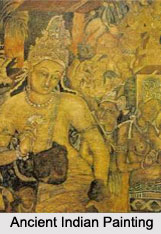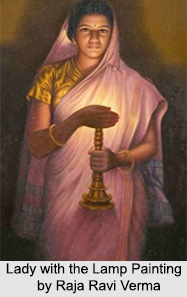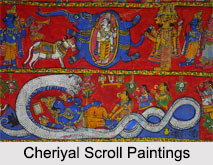 Jhoti Chita, also known as Rangoli, is a traditional art or painting of Odisha which is mostly found in the rural parts of the state. Jhoti Chita or Rangoli is created by making beautiful patterns on the walls or floors using an improvised brush made of cotton and stick or piece of cloth. It can also be done with bare fingers.
Jhoti Chita, also known as Rangoli, is a traditional art or painting of Odisha which is mostly found in the rural parts of the state. Jhoti Chita or Rangoli is created by making beautiful patterns on the walls or floors using an improvised brush made of cotton and stick or piece of cloth. It can also be done with bare fingers.
Painting technique of Jhoti Chita
While Rangolis are made using coloured powders, Jhoti involves line art using the traditional white coloured, semi liquid paste of rice or Pithau. The watery or semi-liquid rice paste is soaked in a piece of cloth or small cotton ball for the drawing. This cloth or cotton ball is usually surrounded with a stick or twig for better grip. The painting mainly portrays different patterns and shapes. Some of them represent religious signs or symbols while others can be just patterns for beautification.
Colours of Jhoti Chita
Several figures and flower patterns are drawn in Jhoti Chita or Rangoli. Before starting the painting, an earthy red colour named "dhau" is smeared on the walls and floors and then the Jhotis are created. It provides a contrasted colour. Dhau is also used as a background colour of Jhoti drawings.
Religious significance of Jhoti Chita
Jhoti Chita is made during certain festivals like marriage, Manabasa Gurubara, Basanti, Kaartika, Dola, Jhulana, Dhanalakshmi puja, Gaja Lakshmi puja and Raja. For different festivals, different types of motifs are drawn on the walls or floors. For example, during Lakshmi puja, a stack of paddy or rice sheaves is drawn on the walls structured like a pyramid as it symbolizes goddess Lakshmi. Small foot marks of goddess Lakshmi are a must in any Jhoti. During Durga Puja, white and red dots are painted on the walls. This combination of red and white signifies the worship of Shiva and Shakti. Intricate and beautiful floral designs like the lotus, elephants, symbols used in Patachitra find place in this form of free hand drawing.
Ritualistic Significance of Jhoti Chita
Jhoti Chita is associated with great social rituals and customs. In the month of Margasira, tribal women of Odisha worship the goddess Lakshmi as it is the harvest season. During this puja, mud walls and floors are decorated with Jhoti Chita or Rangoli. The traditional Jhoti Chita is also used on sarees to make saree prints. It is also a sacred ritual in weddings. Jhoti Chita is drawn not merely with the intention of decorating the house, but also to establish a relationship between the mystical and the material, thus it is a highly symbolic and meaningful art.
This folk painting, broadly known as Rangoli, is believed to bring glory to the festivals, and is indicative of prosperity and happiness. Usually these art forms are practiced by rural women in Odisha, though a few urban women do the same to maintain the religious and ritual heritage associated with it. Despite urbanization this agrarian tradition continues among the people of Odisha.



















